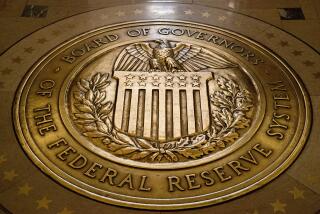OPEC Ministers Have Second Thoughts About Boosting Output
- Share via
VIENNA — There appeared to be growing sentiment in the world oil cartel Thursday for backing off from a planned sharp rise in oil production, an issue of moderate import for consumers but high stakes for those who traffic in oil.
Apparently confronted with an in-house forecast of another oil glut if a scheduled fourth-quarter boost in crude oil production takes place, several oil ministers appeared to side with the Organization of Petroleum Exporting Countries’ leading “hawk,” Iran, in opposing the planned rise in favor of maintaining a strong, $18-per-barrel average price.
The 13-nation cartel, which finished the first day of its midyear meeting, is trying to build on the success it has enjoyed since December in raising oil prices after the disastrous collapse of 1986 that saw prices plummet from $30 a barrel to as low as $9. The chief instrument of OPEC’s progress was its December agreement to cut production to 15.8 million barrels a day and set an official average price of $18 a barrel.
At the same time, OPEC agreed to raise production in the third and fourth quarters to 16.6 million and 18.3 million barrels per day, respectively. That was to accommodate an expected seasonal increase in demand, and OPEC economists projected that those levels would support the $18 per barrel price.
However, the world hasn’t been using as much oil as the cartel expected. The chief dispute within OPEC appears to be the interpretation of just what demand will be the rest of the year.
OPEC delegates listened Thursday to committee reports on the supply and demand outlook, and were apparently told what many economists and analysts have been saying--that oil prices could plunge $1 or $2 a barrel if the October-December production hike goes into effect.
Ecuador’s oil minister, Javier Espinosa, said the committee report gave reason to “worry about (the hike).” Iranian oil minister Gholamreza Aghazadeh said the 18.3-million barrel plan is “out of the question.”
“The most important thing is to maintain the $18,” said Indonesian oil minister Subroto, an influential moderate, after Thursday’s main meeting. “And in view of that, you adjust your production . . . we’re going to examine this.”
There was no comment Thursday from Saudi Arabia and its fellow members of the influential Gulf Cooperation Council, Kuwait and the United Arab Emirates. Before the meeting, the group urged that last December’s agreement--including the fourth-quarter jump in output--be affirmed.
If the increase goes through, it would give the world nearly 2 million more barrels per day of OPEC oil than it needs, according to an estimate by the British brokerage Barclays de Zoete Wedd. That, in turn, could drop prices by a dollar or two per barrel.
After an 18-month period that saw far greater swings in price, this is not the sort of volatility that would make a dramatic difference to consumers. But there are other agendas being addressed by OPEC’s actions.
Iran’s opposition to a higher quota, for instance, stems from its inability to take advantage of it. Locked in a bloody war with fellow OPEC member Iraq, which doesn’t even recognize the quotas, Iran is producing all the oil it physically can--an estimated 2.1 million barrels a day, but less than its current quota. A higher quota would probably mean a lower price for whatever oil Iran does manage to bring to the surface.
To the numerous oil traders observing the OPEC meeting, some of whom already misjudged the effect on prices of the recent Persian Gulf tensions, the fourth-quarter production quotas are pivotal to oil contracts they are now trying to complete.
A New Orleans, La., oilman here said he, like many others, figured that the Reagan Administration’s tough talk on defending oil tankers in the Gulf would tend to lower prices because the markets would view it as assuring continued supplies. Instead, it highlighted the tension and drove prices up about $1 a barrel.
Now, oil brokers are worried about a fourth-quarter glut stemming from OPEC’s production schedule--a glut that could cost traders millions of dollars if they committed to higher-priced oil today.
“Most of the commitments for the third quarter have already been made,” said the New Orleans trader, who is trying to line up 30,000 barrels per day of crude to supply a U.S. refinery in the fourth quarter.
“If they actually push production up to 20 million barrels, it’d be one straw too many on the camel’s back,” the oil executive said. “Prices would drop $1 or $2. At 30,000 barrels a day, that’s a million or two million dollars a month, and we’re just a small operator. How would you play it?”
More to Read
Sign up for Essential California
The most important California stories and recommendations in your inbox every morning.
You may occasionally receive promotional content from the Los Angeles Times.













